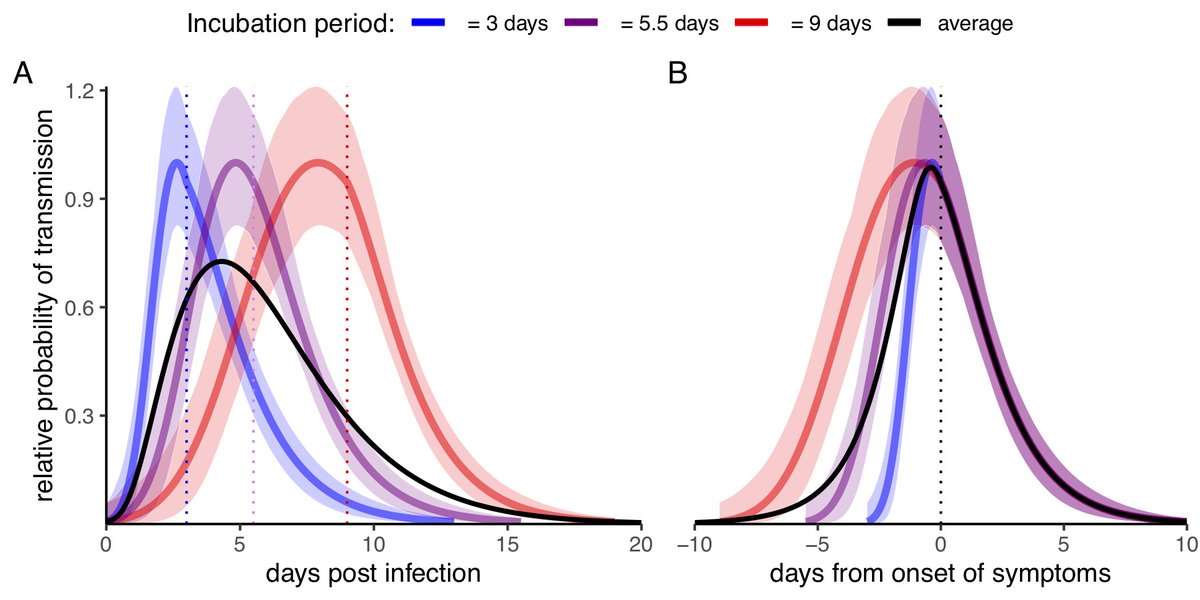Understanding timing of COVID-19 transmission is key to inform good models and to choose appropriate interventions and public health policies.
We made an effort to estimate it accurately from transmission data.
A thread.
1/
( https://www.medrxiv.org/content/10.1101/2020.09.04.20188516v1, not yet peer-reviewed)
We made an effort to estimate it accurately from transmission data.
A thread.
1/
( https://www.medrxiv.org/content/10.1101/2020.09.04.20188516v1, not yet peer-reviewed)
For symptomatic individuals, transmission is actually driven by onset of symptoms:
individuals with late symptoms tend to transmit later,
and individuals with early symptoms tend to transmit earlier...
2/
individuals with late symptoms tend to transmit later,
and individuals with early symptoms tend to transmit earlier...
2/
...but infectiousness increases gradually after infection, peaking precisely around onset of symptoms.
Hence, individuals with longer incubation periods are also infectious for a longer period before symptoms!
3/
Hence, individuals with longer incubation periods are also infectious for a longer period before symptoms!
3/
Also, the important role of pre-symptomatic transmissions was well known.
Transmissions before the day of symptom onset account for ~41% of all non-asymptomatic transmissions.
One of the reasons why prevention (masks, physical distance) and contact tracing are so important! 4/
Transmissions before the day of symptom onset account for ~41% of all non-asymptomatic transmissions.
One of the reasons why prevention (masks, physical distance) and contact tracing are so important! 4/
But early symptomatic transmissions on the day of symptom onset and the next one represent also a large fraction ~35% of transmissions!
Rapid self-isolation as soon as even mild symptoms appear is key. Policies should be in place to facilitate it. 7/
Rapid self-isolation as soon as even mild symptoms appear is key. Policies should be in place to facilitate it. 7/
Thanks to @ChristoPhraser, @DiseaseEcology, @JoannaMasel, @alice_ledda_, @ChrisWymant, Lele Zhao, Virginia Ledda, Lucie Abeler-Dorner, @anel_nurtay, Rob Hinch, Hao-Yuan Cheng, Ta-Chou Ng, Hsien-Ho Lin for some great teamwork!
And of course @UniofOxford @OxfordMedSci @bdi_oxford
And of course @UniofOxford @OxfordMedSci @bdi_oxford

 Read on Twitter
Read on Twitter





